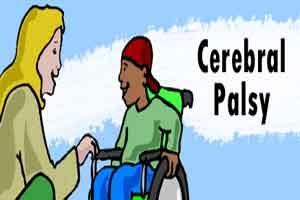- Home
- Editorial
- News
- Practice Guidelines
- Anesthesiology Guidelines
- Cancer Guidelines
- Cardiac Sciences Guidelines
- Critical Care Guidelines
- Dentistry Guidelines
- Dermatology Guidelines
- Diabetes and Endo Guidelines
- Diagnostics Guidelines
- ENT Guidelines
- Featured Practice Guidelines
- Gastroenterology Guidelines
- Geriatrics Guidelines
- Medicine Guidelines
- Nephrology Guidelines
- Neurosciences Guidelines
- Obs and Gynae Guidelines
- Ophthalmology Guidelines
- Orthopaedics Guidelines
- Paediatrics Guidelines
- Psychiatry Guidelines
- Pulmonology Guidelines
- Radiology Guidelines
- Surgery Guidelines
- Urology Guidelines
Simulated Horseback Riding improves quality of life in Children with Cerebral Palsy

Drs. Burton and Morozova, in conjunction with Dr. Kevin Cleary and a team of bioengineers and physical therapists in the Sheikh Zayed Institute for Pediatric Surgical Innovation at Children’s National Health System, recently developed a horseback riding simulator for children with neurologic and musculoskeletal disabilities including cerebral palsy. The simulator focuses on increasing a child’s ability to maintain control of his or her torso, which is the core (or trunk) of the body. It includes a motion platform, carousel horse and tracking system. The team also developed a virtual reality display, which simulates a horse riding along a pier. This display allows the child to play games while riding the horse.Also known as robotically assisted hippotherapy, it has the potential to improve trunk control and quality of life for children with cerebral palsy, according to science presented this week at the Association of Academic Physiatrists Annual Meeting in Atlanta.
“For children with cerebral palsy, hippotherapy is one of the most effective types of therapy and can help improve balance, strength, endurance, and ultimately function and quality of life,” says Presenting author Justin Burton, MD; co-program director and pediatric rehabilitation medicine physician at the National Center for Children's Rehabilitation at MedStar National Rehabilitation Network. “Unfortunately, access is limited because there are relatively few sites, often with long wait lists, and it may not be covered by insurance. My colleague in pediatric rehabilitation medicine, Dr. Olga Morozova, and I initiated this study because we wanted to improve access to and bring the benefits of hippotherapy to an urban medical centre.”
To test the simulator, the researchers enrolled five healthy volunteers. The volunteers were asked to first complete a reach test. Additionally, the researchers noted their ability to control their torsos through a trunk control measurement. The volunteers then had simulated therapy sessions. Once these healthy volunteers successfully completed the simulated therapy, two patients with cerebral palsy – a seven-year-old boy and nine-year-old girl – completed the same reach test and trunk control measurement before testing the simulator.
During the simulated hippotherapy, all participants had a five-minute warm up under the supervision of a physical therapist. During the warm-up, the physical therapist provided tactile cues to encourage upright trunk positioning and appropriate equilibrium reactions.
After the warm-up, the participants moved on to two different games. The first challenged each child’s ability to control his or her posture while keeping their horse in the middle of the pier. The second game worked on trunk control, the ability to anticipate movements, and the ability to shift one’s weight to control the horse. This game forced the participants to focus on balance while completing more than one task at a time.
After the games, the researchers worked with each participant to ride without upper body support as well as encouraged them to reach for toys or give high-fives to push the boundaries of trunk control.
All of the participants in the feasibility study – the five healthy volunteers and the two patients with cerebral palsy – completed four simulated therapy sessions. As an initial evaluation, the researchers compared back angle variation between one healthy volunteer and one patient with cerebral palsy. After the fourth simulated therapy session, the two patients’ trunk control and weight shift seemed to be improving. Furthermore, the patients with cerebral palsy seemed to be weight shifting in a more similar manner to the healthy volunteers.
As a next step, Dr. Burton’s team is beginning to enroll patients – ages four through 10 – in a clinical trial. “We believe patients who have good head control but have difficulty with trunk strength and/or trunk control would benefit most from this therapy,” he says.

Disclaimer: This site is primarily intended for healthcare professionals. Any content/information on this website does not replace the advice of medical and/or health professionals and should not be construed as medical/diagnostic advice/endorsement or prescription. Use of this site is subject to our terms of use, privacy policy, advertisement policy. © 2020 Minerva Medical Treatment Pvt Ltd